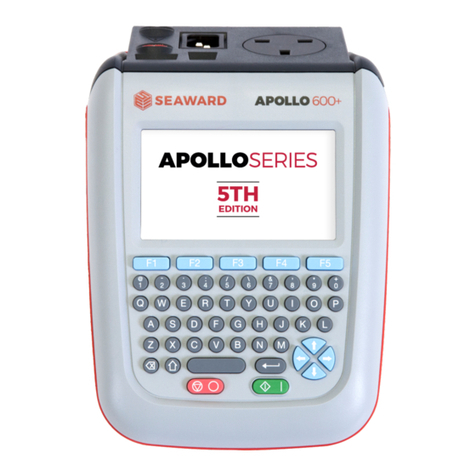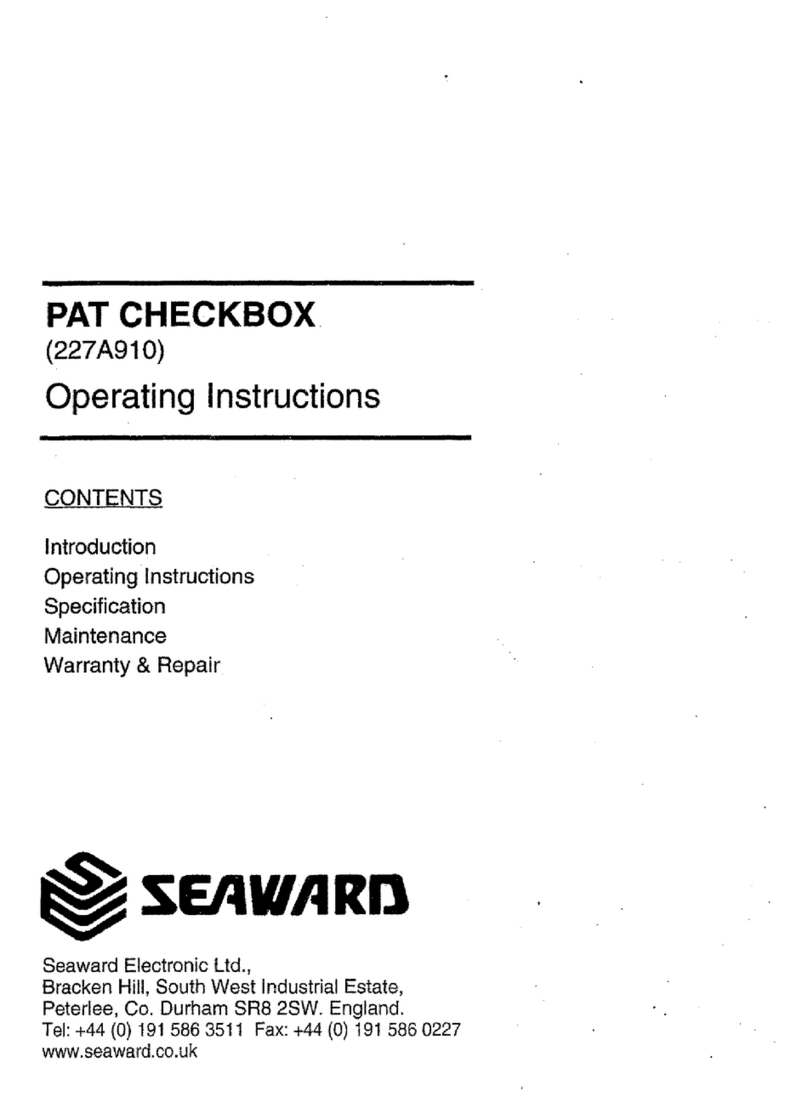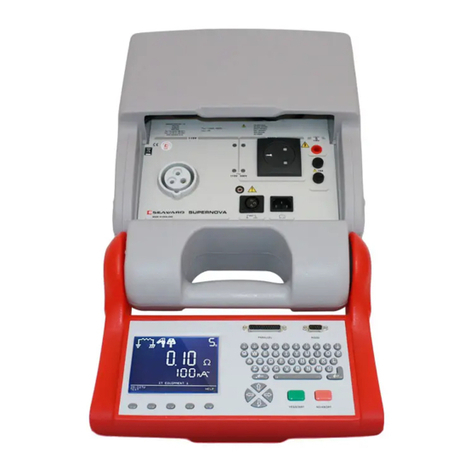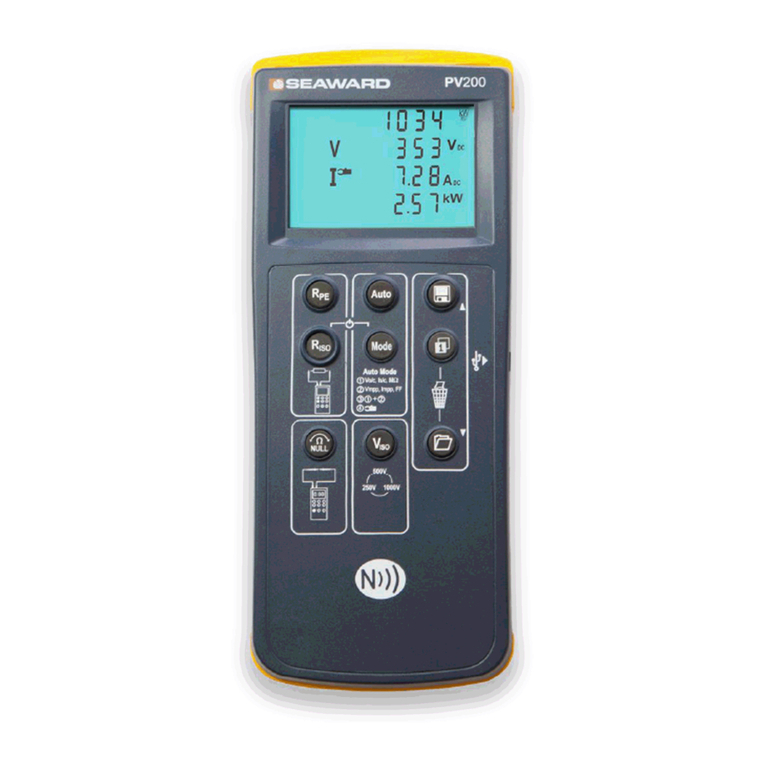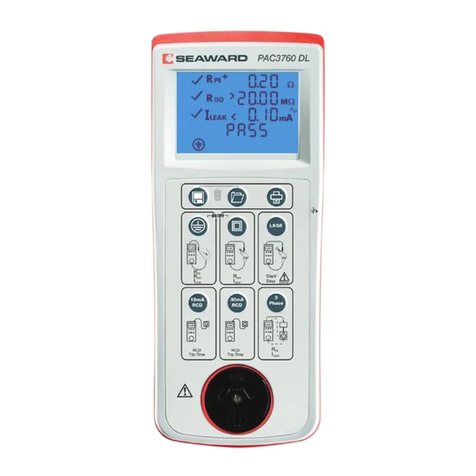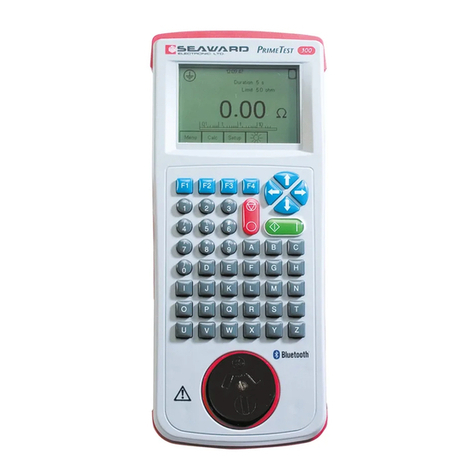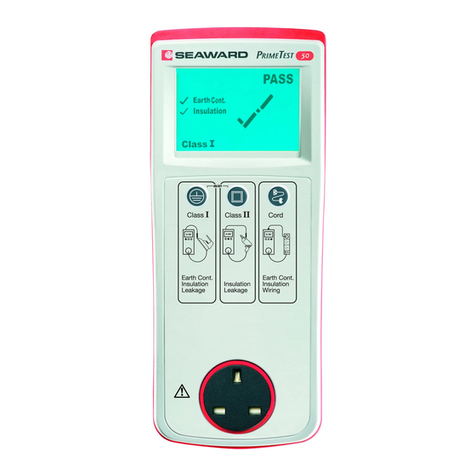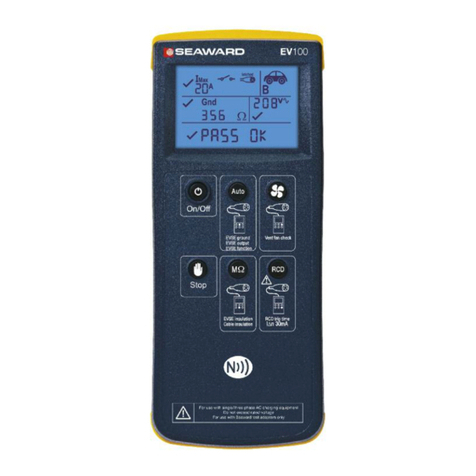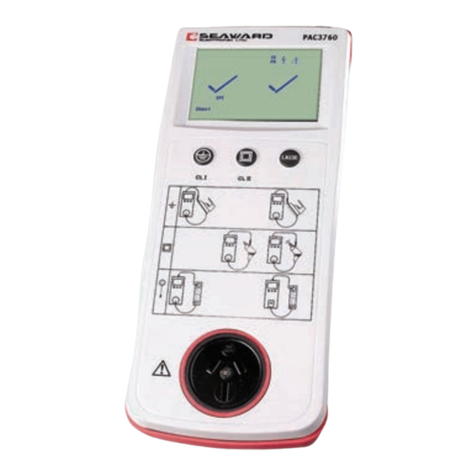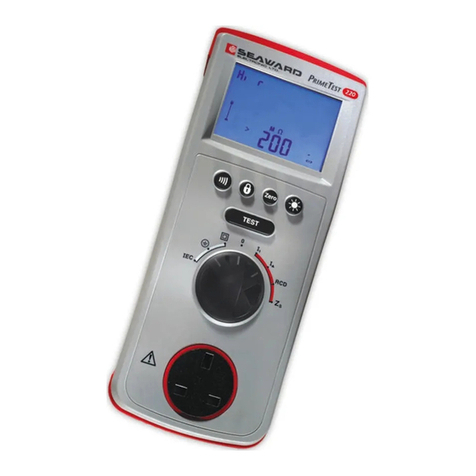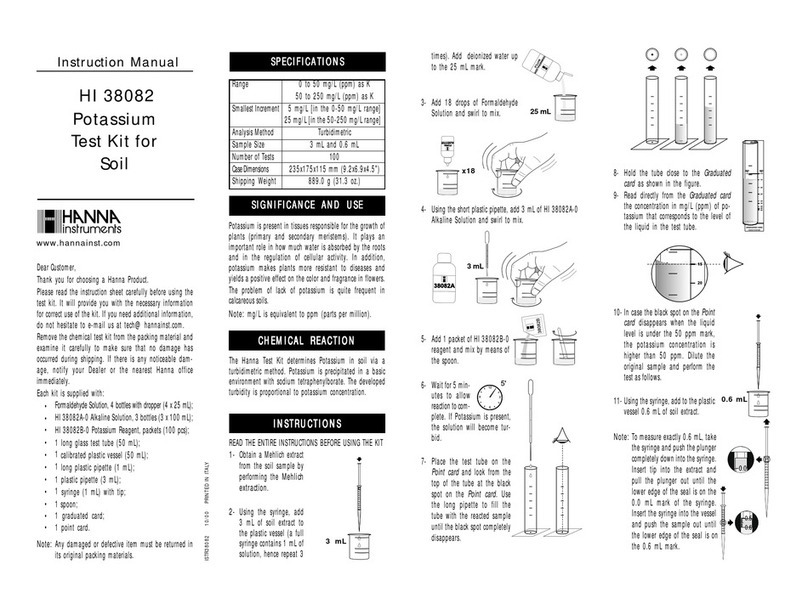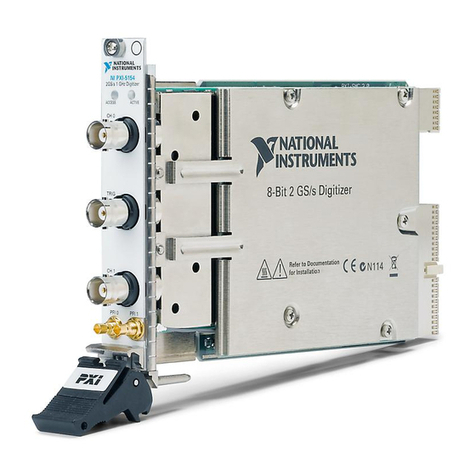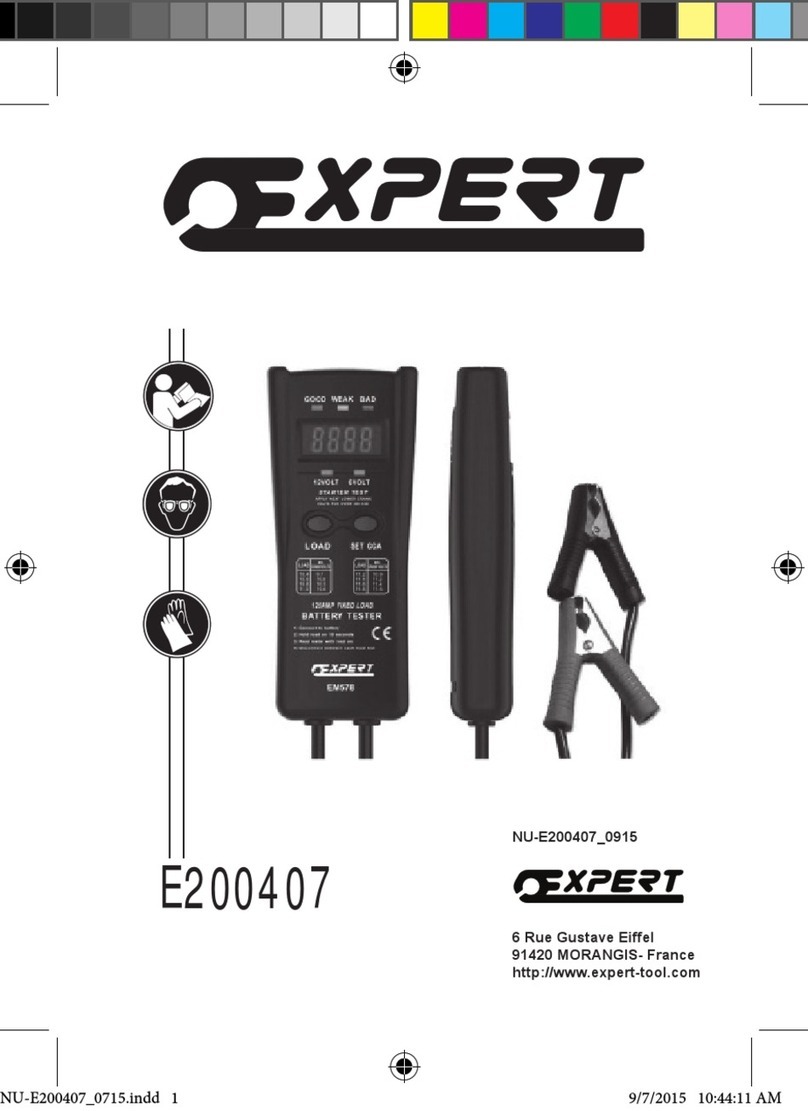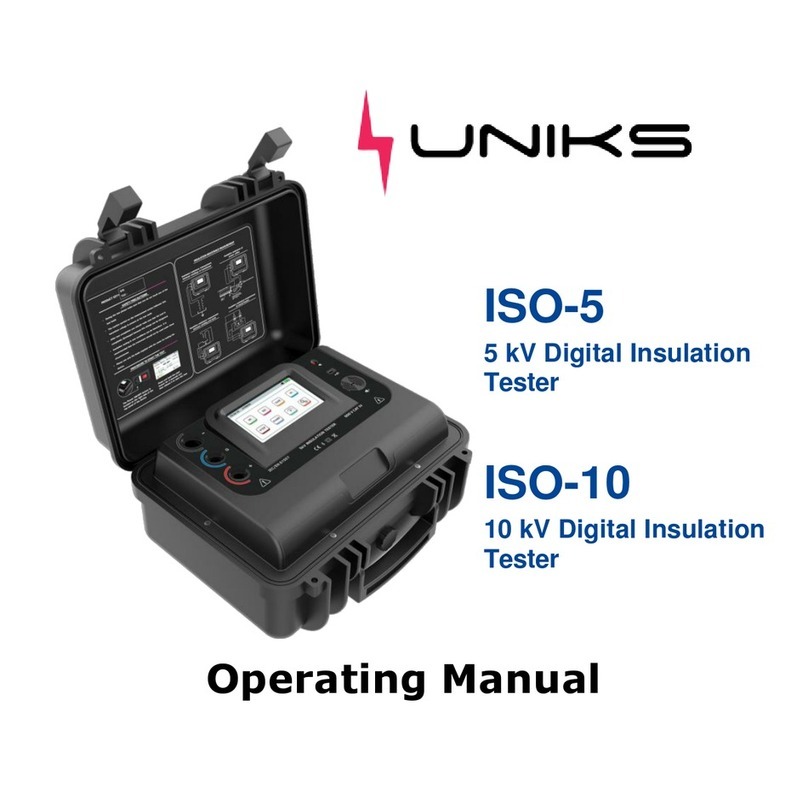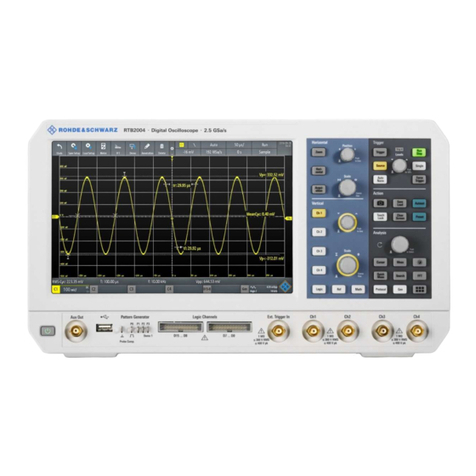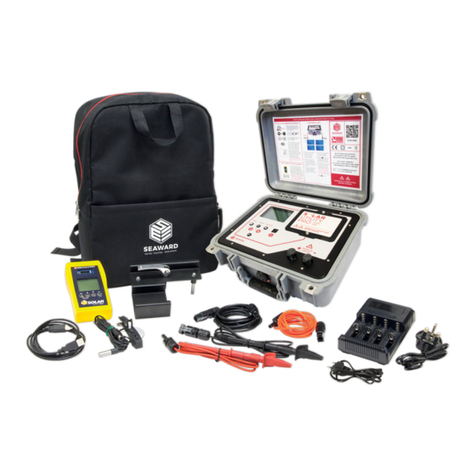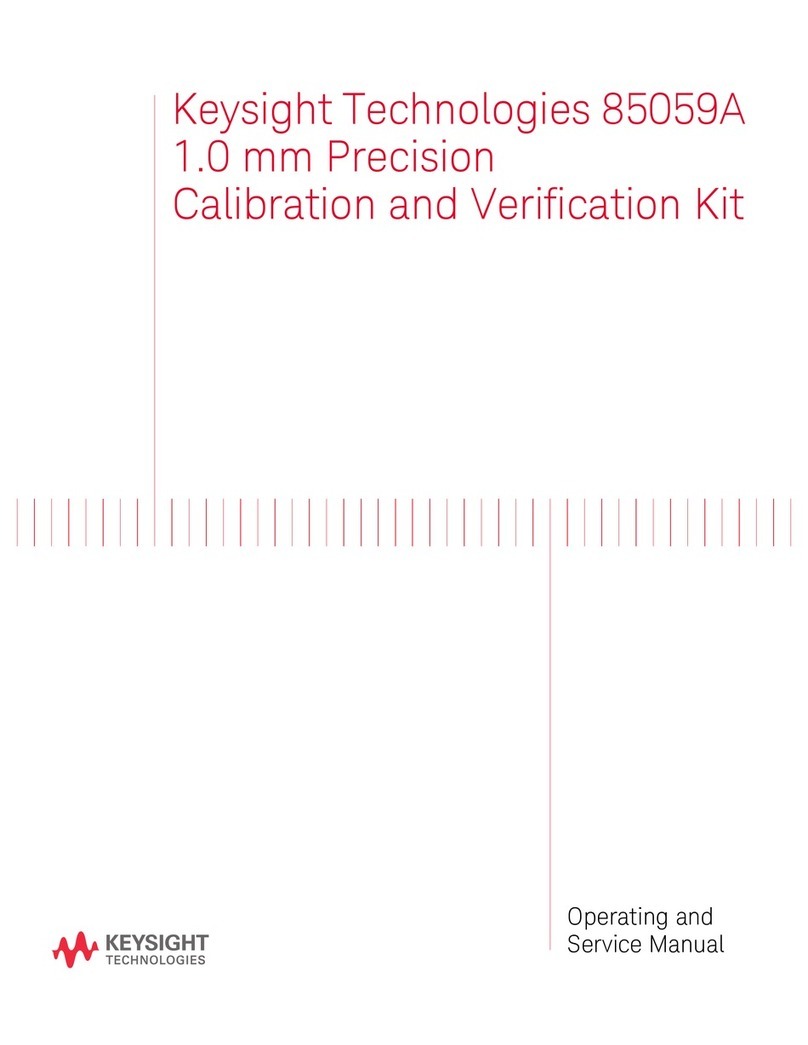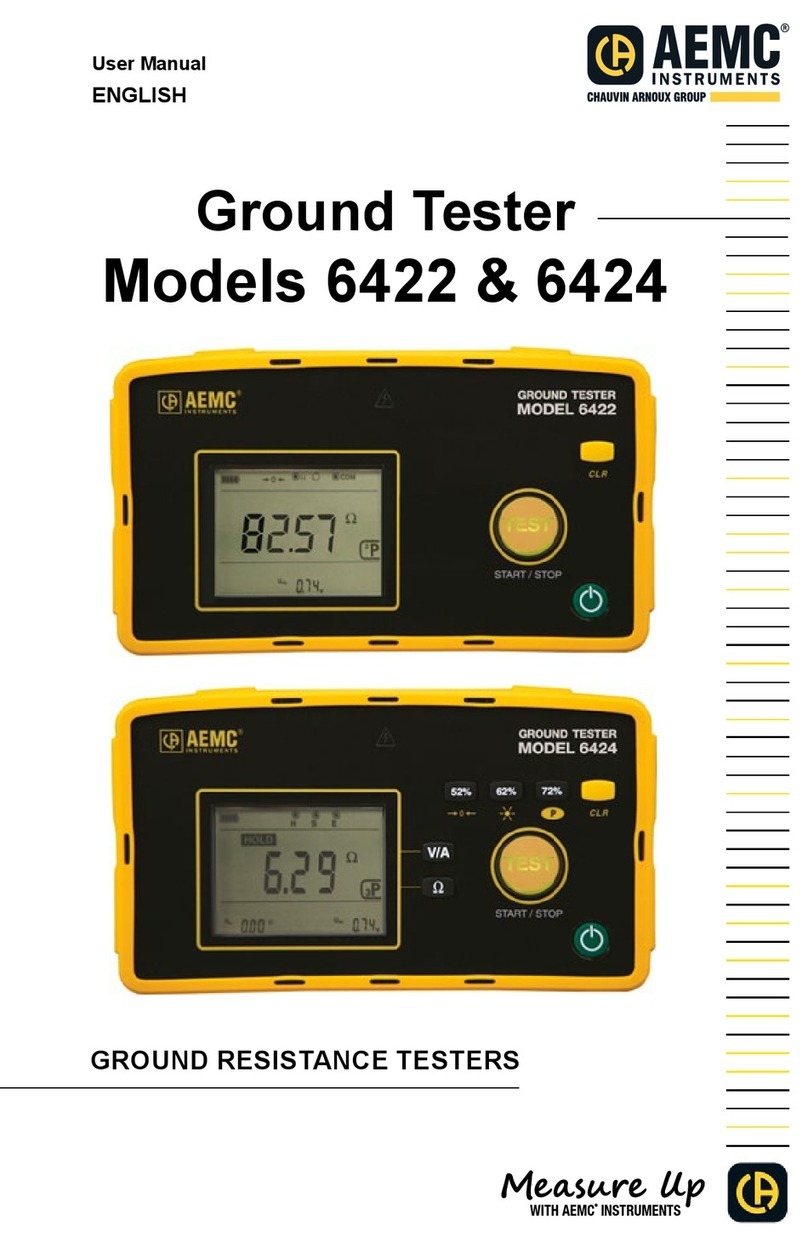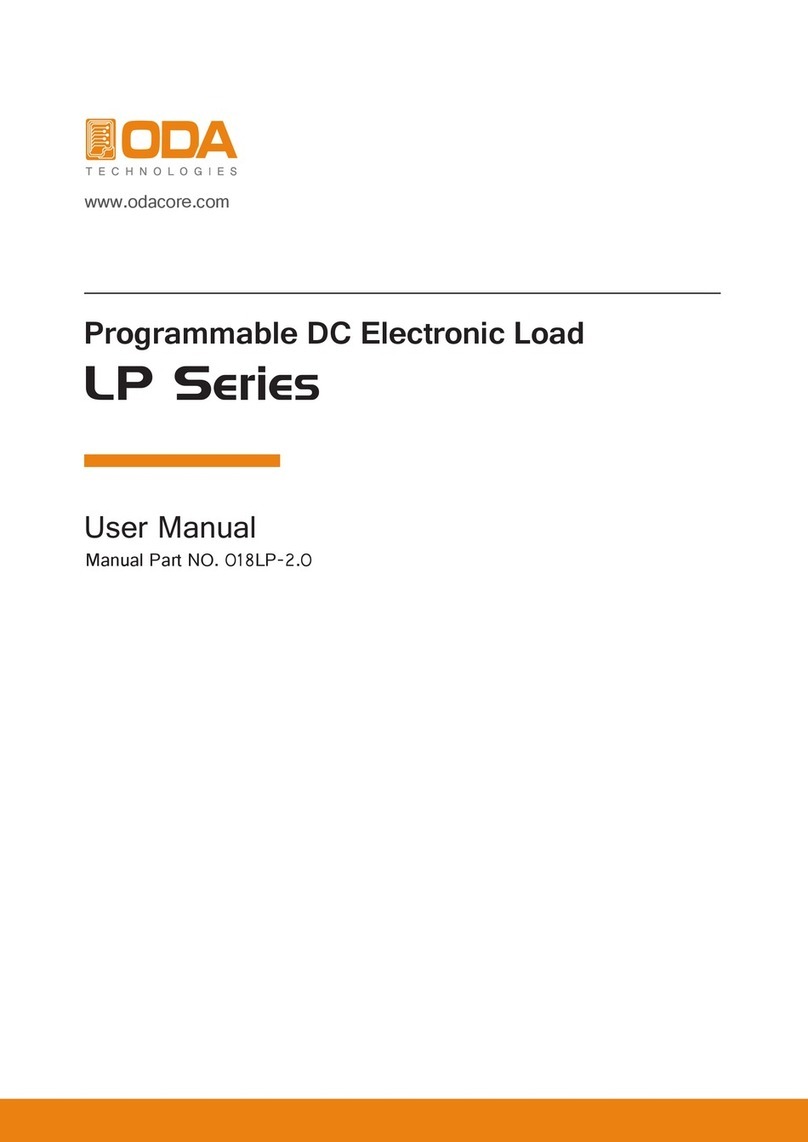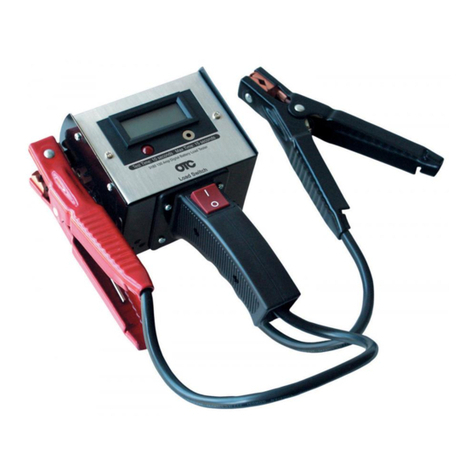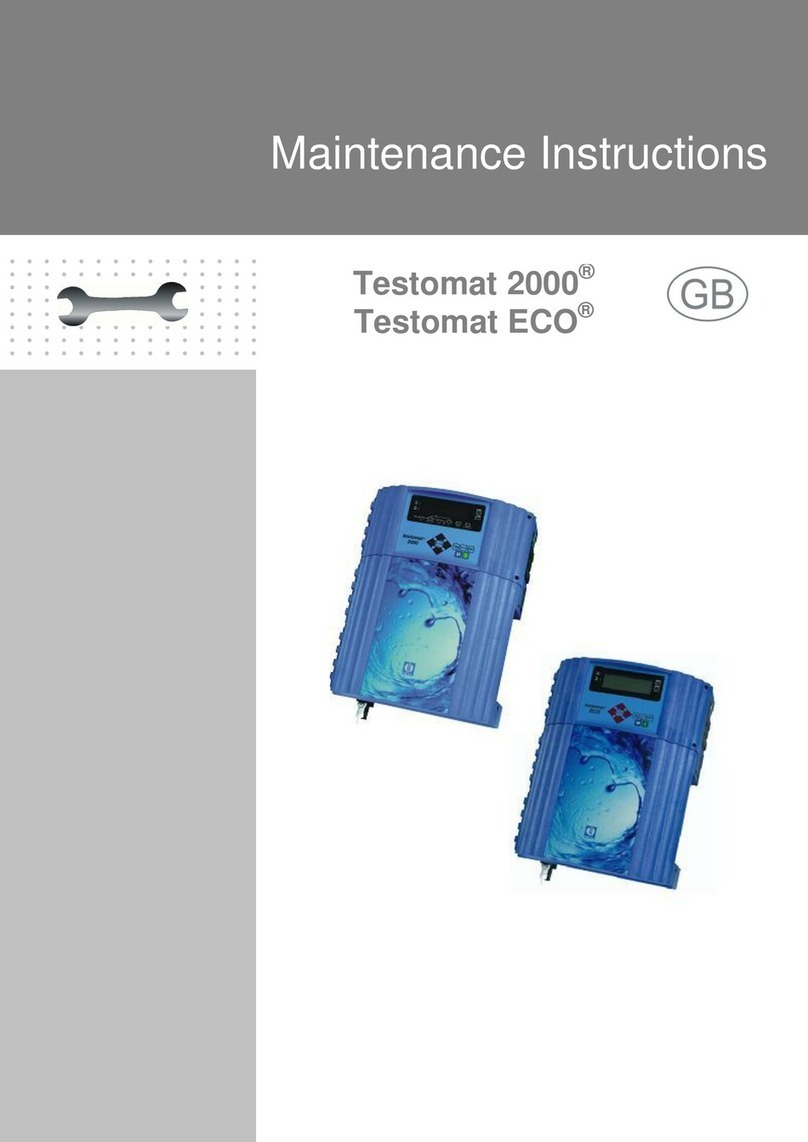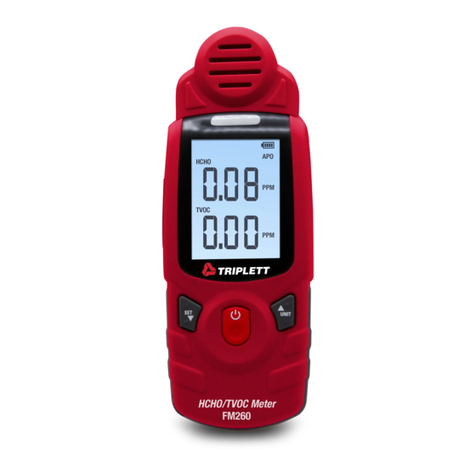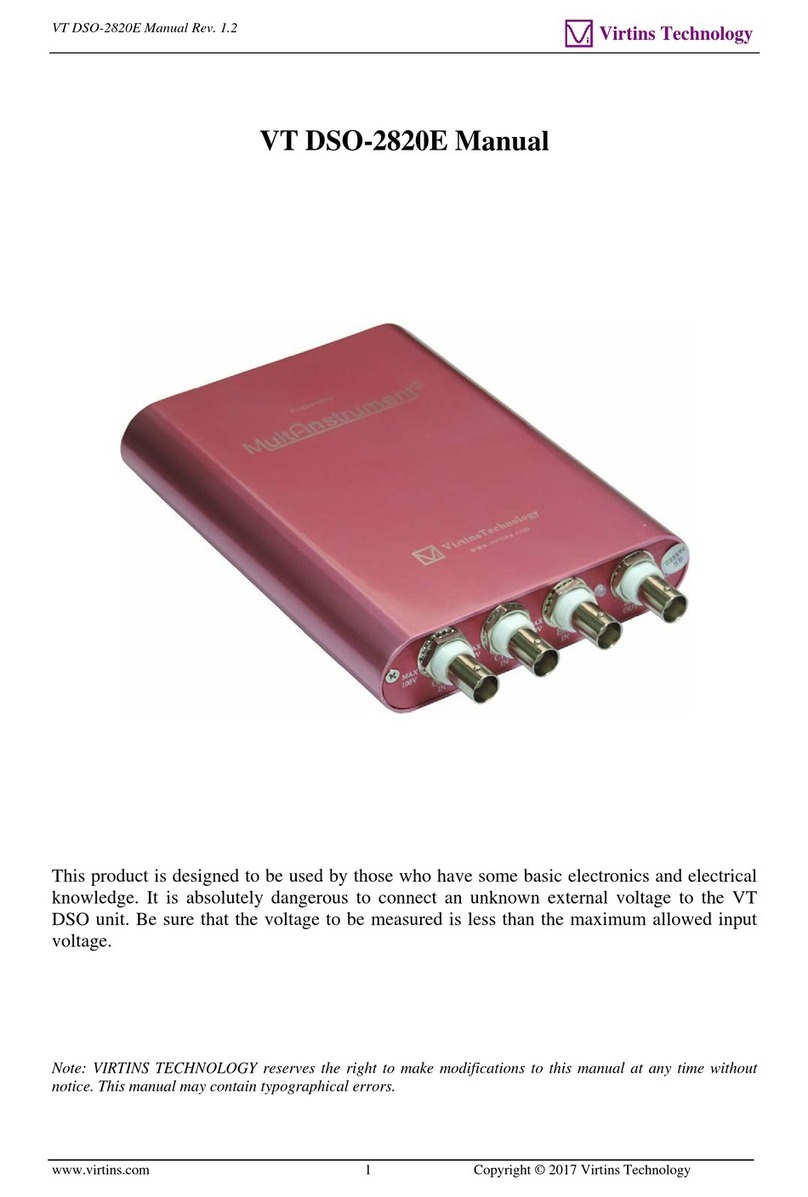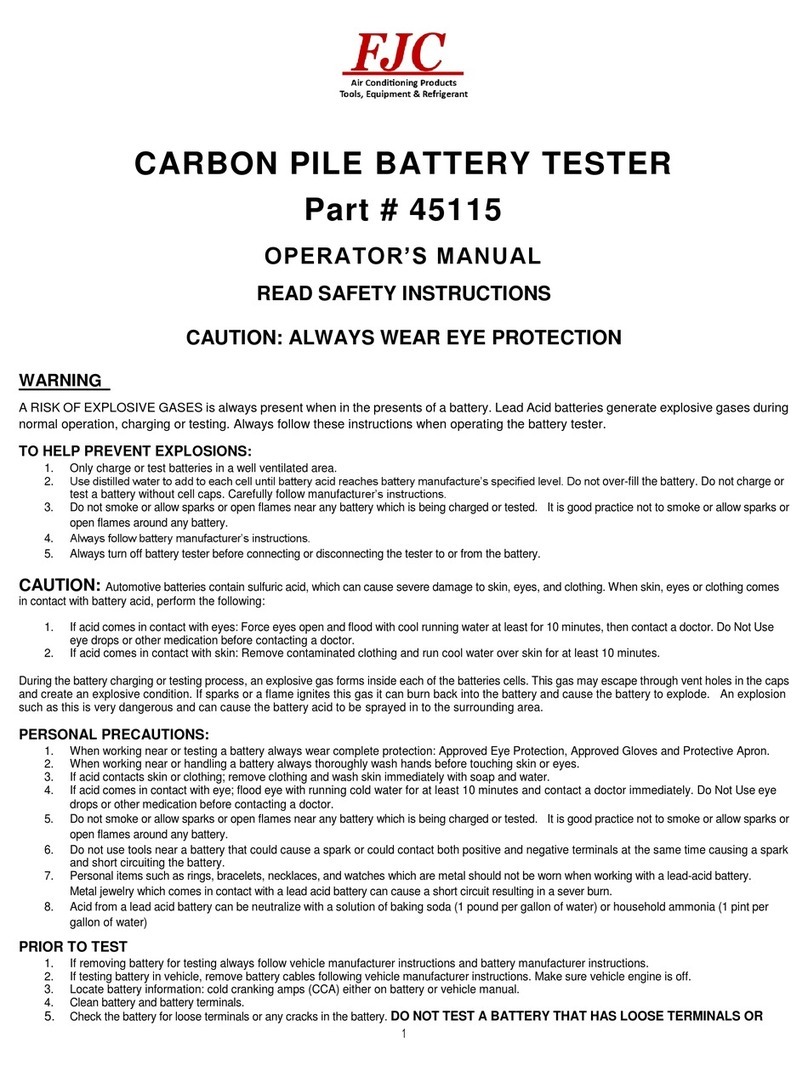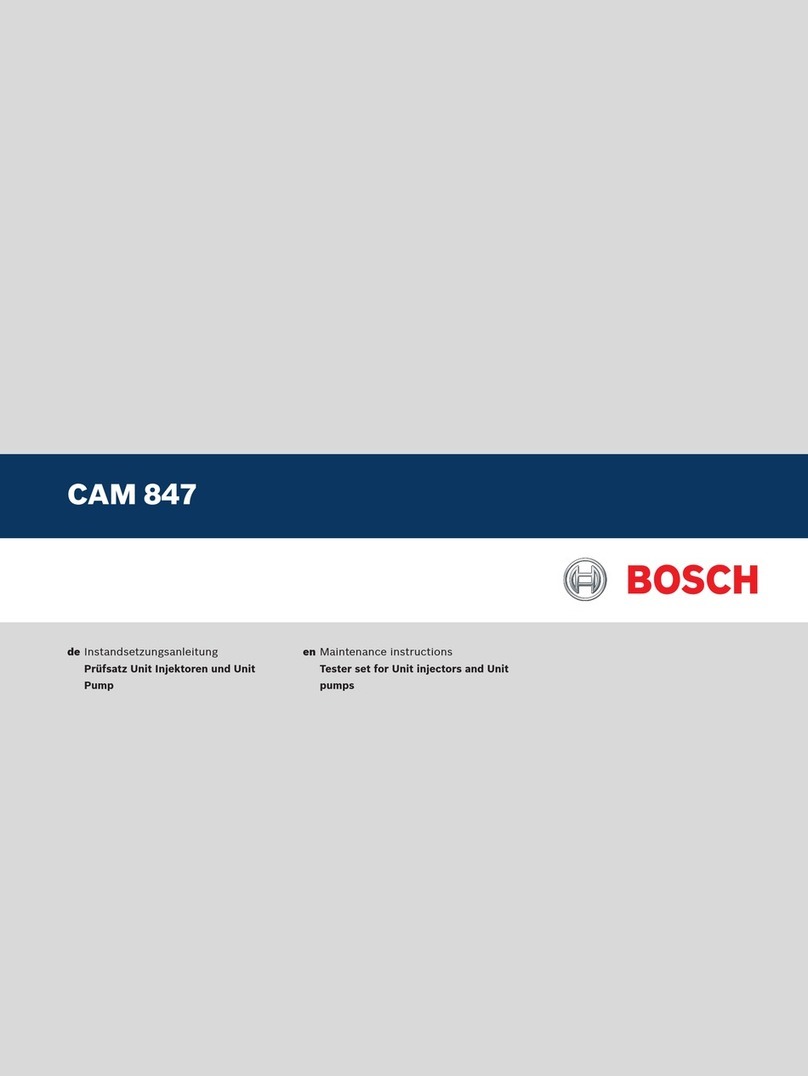the current clamp method.
Method 3 Earth loop impedance measurement
If the earth electrode is used in conjunction with
an RCD the earth electrode resistance can be
tested by using the following method.
i. Switch off the supply and disconnect the earth
electrode from the main earthing terminal.
ii. Connect the loop tester between the line
conductor at the source and the
earth electrode.
iii. Perform an earth loop impedance test. The
measured value is taken as the earth electrode
resistance (RA).
iv. Ensure that the supply is then safely isolated
BEFORE the earthing conductor is
reconnected to the main earthing terminal.
NOTE: The nstallat on s unprotected aga nst
earth faults wh lst the earth electrode s
d sconnected.
Maximum Values of Earth Electrode
Resistance for TT Installations
Assuming: 120 V≤UO≤230 V
*UOis the nominal voltage to earth
In practice values over 200Ωmay not be stable
as soil conditions change as soil dries or freezes.
Thus 200Ωmay be taken as a maximum ‘rule of
thumb’ value.
The tests indicated in this text are the basic
safety requirements for an electrical installation
(i.e. they must be found to be satisfactory before
the supply can be switched on). More
comprehensive guidance can be found in
BS7671 Requirements for Electrical Installations
IEE Wiring Regulations Seventeenth Edition or
the IEE On-Site Guide.
HEALTH & SAFETY
REMOVE ALL LINKS WHEN THE TEST
SEQUENCE IS COMPLETE AND BEFORE
CONNECTING THE INSTALLATION TO THE
SUPPLY.
11
Tri ed. Tested. Trusted.
electrode e.g. 20m for a 2m long electrode.
i. A measurement is made with the potential
spike P2 initially positioned midway between
the earth electrode and the current spike C2.
ii. The measurement is repeated with the
potential spike P2 moved to a position 10% of
the earth electrode to current spike C2
distance towards the earth electrode.
iii. The measurement is repeated with the
potential spike P2 moved to a position 10% of
the earth electrode to current spike C2
distance towards the current spike C2.
iv. The average of the 3 measurements is
calculated and the percentage deviation
calculated by finding the maximum deviation
from the average and expressing this as a
percentage of the average.
v. If the percentage deviation is greater than 5%
the measurements should be repeated with a
larger separation between the current spike
C2 and the earth electrode.
Note: The earth electrode must be d sconnected
from the nstallat on to avo d measurement errors
due to parallel earth paths through bonded parts,
for example, water or gas serv ce p pes. Tak ng
the example of an earth electrode w th a relat vely
h gh res stance to earth, say 1000Ω, and the
electrode s connected to a water serv ce p pe
w th a res stance to earth of say 10Ω. If the earth
electrode s not d sconnected before attempt ng
to make a measurement, the effect of the parallel
path v a the water serv ce p pe w ll be to g ve an
apparent earth electrode res stance of 1000Ωn
parallel w th 10Ω.e. 9.9Ω.e. the h gh earth
electrode res stance s masked by the presence
of the parallel path v a the water serv ce p pe.
Method 2 Current clamp measurement
Some earth resistance test instruments such as
the Seaward ERT 1557 have a measurement
mode which uses an external current clamp to
measure the current through the earth electrode.
This eliminates the effects of parallel paths and
allows measurement of the earth electrode
resistance without disconnecting the electrode
from the installation. The benefit is that the
installation does not need to be shut down in
order to measure the earth electrode resistance.
D agram 10: Earth electrode res stance measurement w th
current clamp
The measurement technique is as per the three
pole method but with the external current clamp
placed around the earth electrode. The
measured value is the earth electrode resistance.
Note: The earth electrode does not have to be
d sconnected from the nstallat on when us ng
10
www.seaward.co.uk












